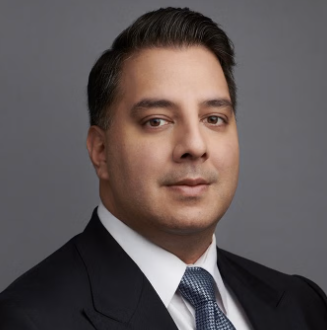Market
Memos from Howard Marks: More on Repealing the Laws of EconomicsPrivate Equity Amid Industrial Revolution 4.0
The Opportunity Today
The Fourth Industrial Revolution is rapidly reshaping markets, economies, and everyday life. Industrial companies are at the forefront of this change as they evolve into smart factories—highly automated facilities powered by AI, automation, and advanced analytics that redefine how businesses operate. As companies upgrade legacy systems and focus on growth, demand for private capital is rising.
For illustrative purposes only. Source: Disruptive Leadership Institute, March 2024.
AI in manufacturing is expected to expand at a compound annual growth rate (CAGR) of 44% between 2024 and 2034—and industrial companies will turn to private equity (PE) funding to modernize, restructure and power progress.
For illustrative purposes only. Source: Precedence Research, 2025.
Private equity firms with deep operating expertise are well positioned to lead this shift—modernizing businesses and enabling long-term value creation.
Past performance does not guarantee future results. For illustrative purposes only. Top- and bottom-quartile deals by internal rate of return; top and bottom quartiles include only deals with IRR data available; includes fully and partially realized global buyout deals by year of entry; includes deals with invested equity capital of $50 million or more; excludes real estate; all figures calculated in U.S. dollars.
Source: Bain & Company, Global Private Equity Report 2024.
The Case for Private Equity
Growth Potential
Private equity is seen as a reliable driver of long-term portfolio performance. Over recent decades, private equity has consistently delivered robust returns, notably outperforming public equities in both U.S. and global markets. This compelling track record underscores private equity’s resilience and its critical role in building portfolios designed for sustained growth.
Private Equity Outperformed Public Markets, Historically
Past performance is not indicative of future results. For illustrative purposes only. Information does not represent returns of a fund. An investor cannot invest in an index. Private Equity represented by Preqin Private Equity Index, Global Equities represented by MSCI World Index, U.S. Equities represented by S&P 500. Please see disclosures for additional information.
Source: Morningstar, Preqin, Brookfield as of December 31, 2024.
Downside Defense
Private equity offers a compelling alternative for investors seeking ways to diversify their public market volatility.
Private Equity Highlights Downside Control in Worst 5-Year Period (2008–2024)
Past performance is not indicative of future results. For illustrative purposes only. Information does not represent returns of a fund. An investor cannot invest in an index. Global Equities represented by MSCI World Index, Private Equity represented by Preqin Private Equity Index, and U.S. Equities represented by S&P 500 for periods between January 1, 2008 and December 31, 2024.
Source: Morningstar, Preqin as of December 31, 2024.
Attractive Risk-Adjusted Returns
Private equity typically enhances an overall portfolio's risk-adjusted returns. For investors with long-term horizons and minimal liquidity needs, such as those not requiring access to capital for 10 years, a higher allocation—up to 50% or more—may be suitable. In contrast, investors with regular liquidity needs should keep a smaller allocation, typically 15% or less, to maintain flexibility and meet obligations.
Private Equity Has Demonstrated the Ability to Enhance an Overall Portfolio’s Risk/Return Profile
Past performance is not indicative of future results. For illustrative purposes only. Information does not represent returns of a fund. An investor cannot invest in an index. For the period January 1, 2008 through December 31, 2024, annualized return and risk (measured by standard deviation, a measure of the amount of variation of the values of a variable about its mean). Global Equities represented by MSCI World Index, Private Equity represented by Preqin Private Equity Index. Please see disclosures for additional information.
Source: Bloomberg, Preqin as of December 31, 2024.
Private equity investments are speculative and involve significant risks, including long holding periods, limited or no liquidity, higher fees and expenses, and possible loss of the entire investment. Returns can be highly variable and depend on economic, market and manager-specific factors; past performance or historical outperformance versus public markets does not guarantee future results. Such investments may be unsuitable for investors who require current income or ready access to capital.
The Brookfield Advantage
We leverage decades of experience, our global network, and scale to invest in high-quality businesses that provide essential products and services. We then apply our operational expertise to drive improvements, enhance value, and position these businesses for long term success. We invest meaningful capital alongside our clients to ensure strong alignment of interests.
Leading Alternatives Asset Manager
Brookfield is a leading alternatives asset manager with over $1 trillion AUM. Our platform is built on a rich legacy of strategic investments, beginning in 1899. This early focus on long-term value creation shaped the Firm’s approach to private equity, which became our first flagship offering in 2001.
Over time, this legacy of growth and innovation has advanced Brookfield’s private equity platform, which is now more accessible to private wealth investors.
Globally-Interconnected $1T Ecosystem
A key to our success is the strength of the $1 trillion ecosystem—a global network of over 2,500 investment professionals and 250,000 operating employees worldwide. We actively collaborate across our broader platform, including real estate, infrastructure, and renewable energy, to increase deal flow, uncover unique opportunities, and optimize outcomes for our private equity business.
This gives us valuable insights, helping guide our investment decisions and adding value to the businesses we own.
Proven Investment Strategy and a Trusted Playbook
- High-quality businesses across the industrial and business services sectors
- Leading and defensible market positions
- Durable cash flows
- Contrarian or complex situations
- Meaningful operational improvement opportunities
- Operations-first mentality
- Repeatable value-creation levers
50% of Value Created from Improved Operations
Operationally Focused, Value Investors
Our operational focus is rooted in our pedigree as an owner and operator. Our investment and operations teams work as one, an integrated approach that sets us apart. We are not financial engineers—we are business builders. More than 50% of our value creation comes from hands-on operational transformation. This operational edge strengthens our ability to identify, acquire, and enhance businesses that are mission-critical to the global economy.
- $145B AUM
- 170 Investment Professionals
- 142K Operating Employees

Nielsen—New York, NY
Nielsen provides essential measurement data for all forms of video and audio consumption across all types of devices.
The company is poised for growth through its leadership in cross-media measurement and a robust margin expansion plan driven by product innovation, digitization, and operational efficiencies.
- $100B in video and audio advertising is driven by Nielsen data.
- The 1st company to receive the Media Rating Council’s accreditation for measuring national TV audiences using a hybrid of big data and real household viewing.

Scientific Games—Alpharetta, GA
Scientific Games is the leading provider of technology and services to government-run lotteries worldwide.
The company is well positioned to grow by expanding with existing customers, entering new markets, and improving operations—supported by long-term customer relationships, a highly regulated market, and a track record of reliability.
- 70%+ global market share of instant lottery tickets
- $95B of lottery ticket sales in the U.S. powered by Scientific Games

Cupa—Ourense, Spain
Cupa is the global leader in natural slate roofing, with demand supported by regulatory mandates and long-term sustainability tailwinds, given slate’s durability, insulation benefits, and low environmental impact.
The company is positioned for continued growth through operational improvements, capacity expansion, and synergy capture from recent acquisitions.
- 1 in 2 slates installed worldwide are Cupa. As the global leader in natural slate, Cupa spans 60+ countries.
- 186,000 metric tons of slate exported——ranking among the world’s top exporters, underscoring its unmatched global scale.

GEMS—Dubai, UAE
GEMS Education is a leading global K–12 private school operator with a strong presence in Dubai—one of the world’s largest and fastest-growing education markets—supported by long-term economic and demographic tailwinds.
The business offers stable, recurring earnings and is well positioned for growth through pricing increases, higher enrollment, and strategic school expansions in high-demand areas.
- 250,000+ students from 170+ nationalities educated across four continents, making GEMS Education the world’s largest private K–12 provider.
- $100M AI-powered School of Research and Innovation in Dubai serves as a global education hub across GEMS’ network of 90+ schools.
CDK—Austin, TX
CDK provides essential software that helps over 15,000 automotive dealerships across North America run more efficiently, with strong customer loyalty and a growing presence as large dealer groups expand.
The company is set to grow through product development, sales expansion, and operational improvements, while continuing to benefit from its long-term customer relationships and steady demand.
- ~50% of the U.S. dealer-management software market
- 30,000+ dealership locations worldwide are supported by CDK integrated software for auto, truck, motorcycle, marine, and heavy equipment dealers.
